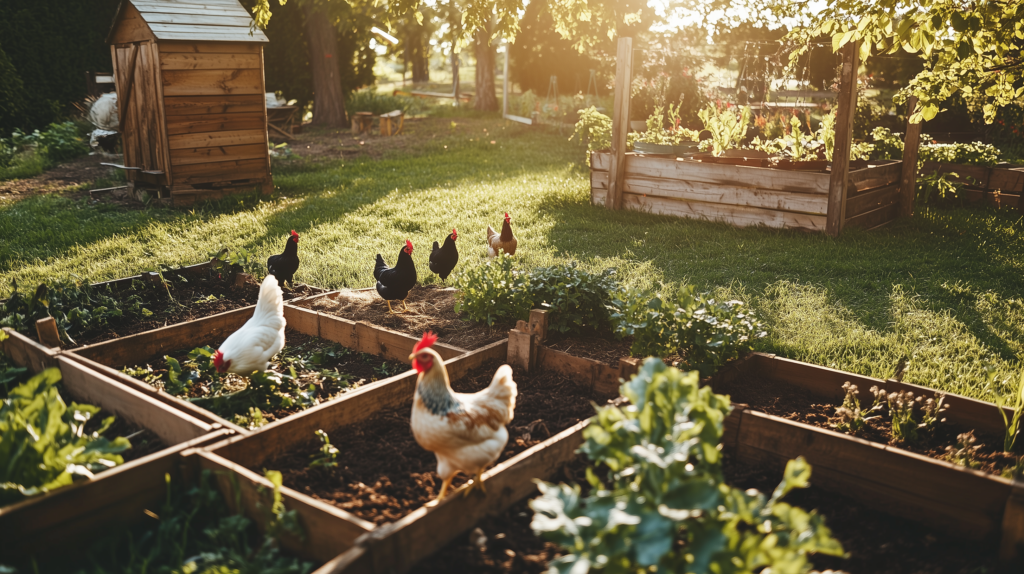This post may contain affiliate links, including those from Amazon Associates. If you make a purchase through these links, I may earn a commission at no additional cost to you. Learn more about our affiliate policy.
For years I dreamed of fresh eggs from my own backyard, but I thought it would be too expensive to pull off.
But trust me, it’s more doable than you might think! Life in urban or suburban spaces can feel limiting when you crave self-sufficiency in a city. Rising grocery costs and a wanting to know where our food comes from often pull us in that direction.
When I first considered raising backyard chickens, I hesitated. The cost, the space, the know-how, it all seemed so overwhelming.

But with a little creativity and some free plans, I built my first coop for under $200, and it’s given me a sense of accomplishment every time I look out my window.
Now, I’m sharing how I did it, plus five beginner-friendly coop designs with free plans you can use.
You’ll find practical steps, cost-saving tips, and a bit of encouragement to start your own flock, no matter your space or budget.
The Magic of Backyard Chickens

Why start raising backyard chickens? For me, it’s about bringing a sense of sovereignty back into my everyday life. There’s something grounding and satisfying about collecting warm eggs each morning, knowing they came from my own little flock.
Beyond that, chickens offer so much more than I expected when I began.
- Natural pest controllers: They happily peck away at garden bugs, keeping my small space thriving without harsh chemicals.
- Nutrient-rich compost: Their waste transforms into a rich boost for my patio plants, bringing them to life effortlessly.
- A step toward self-sufficiency: Raising them in my modest urban yard feels like a quiet reclaiming of independence.
- A calming rhythm: Watching them settle into their routine has added a soothing flow to my days I didn’t expect.
- Easing the grocery bill: Fresh eggs daily lighten the load on my budget, a small but meaningful win.
How to Keep Costs Under $200
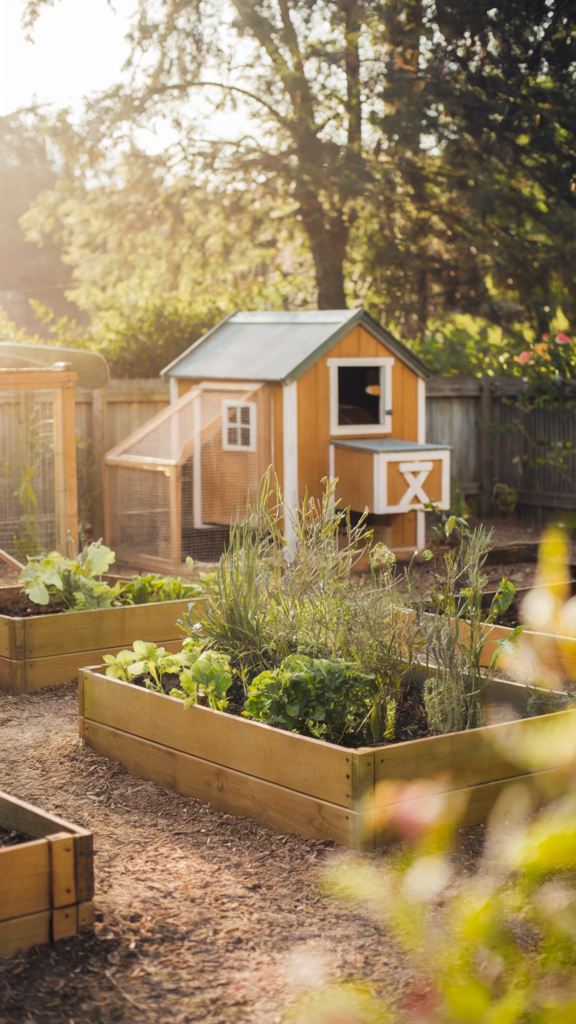
The big question: how do you build a chicken coop without spending a fortune?
When I started, I was determined to keep it under $200, not just to save money, but to prove it could be done efficiently. Here’s what worked for me, and what I’d suggest for you.
- Repurpose what’s around you. I found an old cabinet on Craigslist for free and turned it into the base of my coop with a few tweaks. Old sheds, playhouses, or even sturdy shelves can work too.
- Use reclaimed materials. Pallets from a local hardware store, scrap wood from a neighbor’s project, or leftover fencing—check buy-nothing groups or ask around. It’s amazing what people give away.
- DIY over pre-made. Pre-made coops often start at $300 or more, but building my own saved cash and felt empowering. Plus, I could customize it to my space.
- Focus on essentials. Sturdy framing, predator-proofing, and good ventilation matter most. Skip the fancy extras until you’re ready.
One trick I love: browse local community pages or apps for free materials. Someone’s discarded wood pile became my coop’s walls, and it felt like a small victory. With a bit of patience, you can gather what you need and stay under budget.
Designing for Small Spaces and Security
Space and safety were my biggest worries starting out. How much room do chickens really need in a tight urban yard? And how do I keep them safe from sneaky predators? Here’s what I learned, often the hard way.
Space Needs
Chickens don’t need as much as you might think. Inside the coop, aim for 4 square feet per chicken, enough for them to roost and rest. In the run, 8 square feet per bird gives them space to stretch and peck.
My yard is small, so I went vertical with a loft-style design, stacking the run beneath an elevated hutch. It’s a game-changer for limited spaces. Check local rules too, some areas have setback requirements from property lines, but my city was lenient as long as it stayed discreet. You can check the laws in your state here.
Safety Must-Haves
Safety took me by surprise. My first coop wasn’t elevated, and one night a raccoon nearly broke in! My heart sank hearing the commotion. Now, I swear by these basics:
- Hardware cloth (not chicken wire) for windows and runs. It’s tougher against predator claws.
- Secure latches on doors, predators are more clever than I expected.
- An elevated design to keep ground-dwellers at bay.
- Good ventilation, but covered to stay secure.
I added a cheap automatic door later, and it’s been peace of mind when I’m rushing out in the morning. Start with these, and your flock will thank you.
Your Free Chicken Coop Blueprints
Ready to build? Here are five free plans from Easy Coops, each perfect for beginners with small backyards. Browse more plans and filter by Beginner or Easy on their website for even more ideas!
Cozy Cottage

This sweet design mimics a miniature barn, with extra height that allows ample space for roosting bars. It’s built for convenience, featuring a ramped chicken-sized door near the nesting boxes so hens can move in and out with ease. Holding 6 chickens in a compact 2 x 4 ft footprint, it’s a charming option for anyone dipping their toes into chicken-keeping.
Cozy Cottage Plans from Easy Coops
All-in-One City-Worthy Chicken Coop
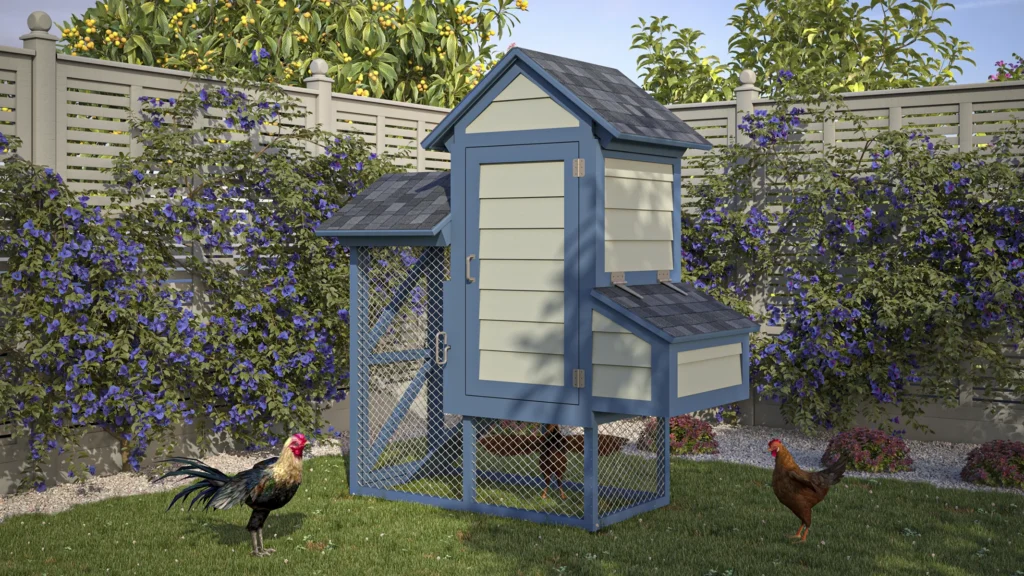
For urban dwellers dreaming of a small flock, this plan offers a compact 2 x 4 ft coop that holds 6 chickens. It’s an all-in-one solution with a predator-proof aviary, a cozy roosting area, and nesting boxes accessible from outside for effortless egg collecting. Large doors make cleanup simple, a practical choice for city life that keeps things manageable.
All-in-One City-Worthy Chicken Coop from Easy Coops
City-Worthy Extra-Small Hen House
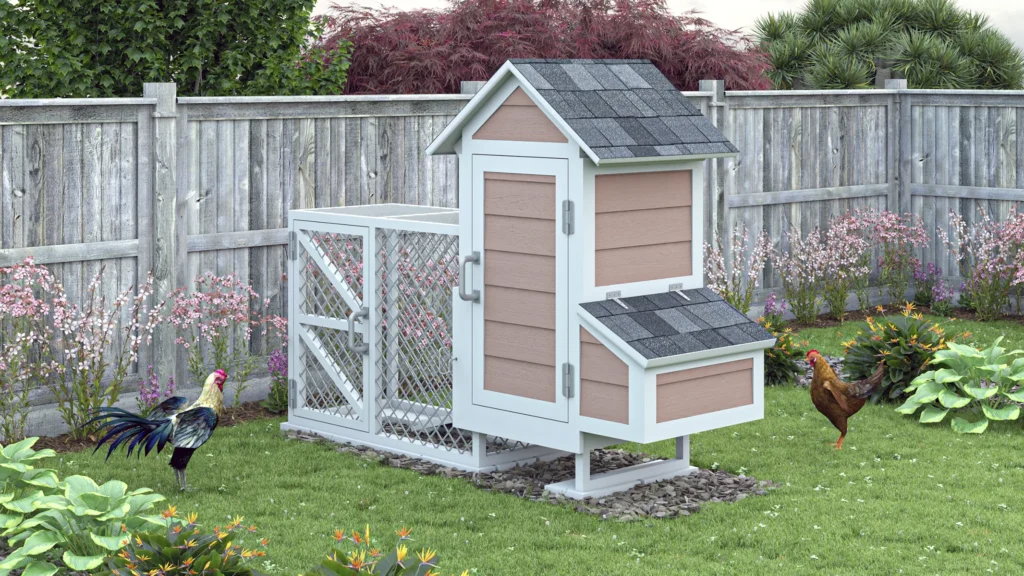
Proof that a small flock doesn’t need much room, this extra-small coop fits into a 2 x 6 ft space and supports 6 chickens. It’s ideal for busy towns with strict rules, offering an enclosed run for safe outdoor time. This design brings a touch of nature to tight spaces without overwhelming them.
City-Worthy Extra-Small Hen House from Easy Coops
DIY Chicken Tractor
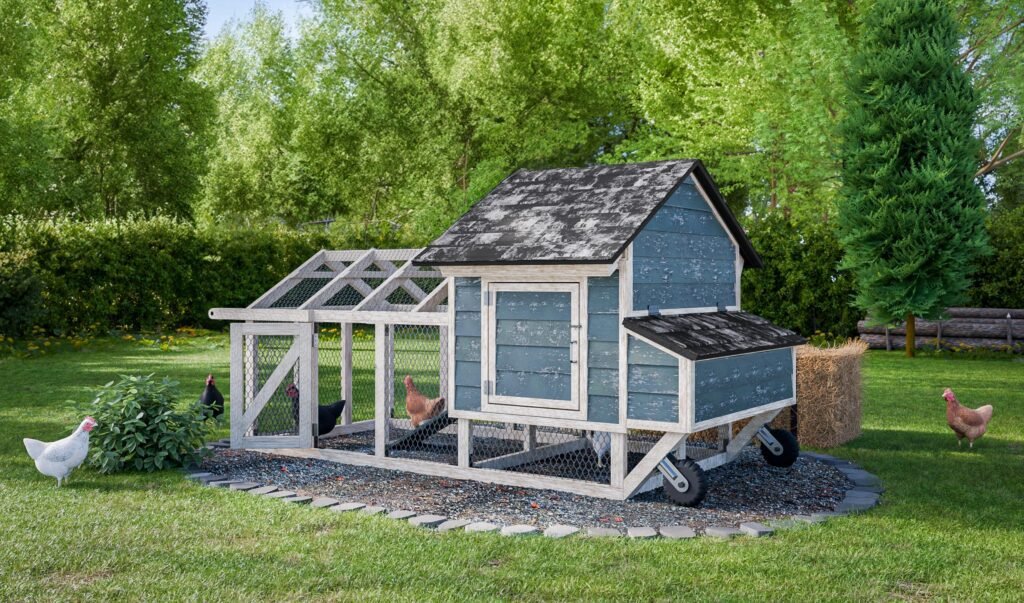
Built for movement, this coop lets chickens enjoy fresh grass and new spots to dig for worms with ease, just roll it to a new patch whenever you like. Spanning 4 x 8 ft and holding 6 chickens, it includes a fenced aviary, a cozy roosting area, and nesting boxes. It’s a simple, clever design for anyone wanting to bring a bit of roaming freedom to their flock without much fuss.
DIY Chicken Tractor from Easy Coops
Compact Low-Maintenance Chicken Coop

Practicality shines in this low-maintenance design, which fits 8 chickens into a 4 x 5 ft space. It’s well-equipped despite its size, and using pallets or scrap wood can keep costs low. A convenience door allows egg collection without disturbing the birds, a thoughtful touch for those who value ease and efficiency in their start with chickens.
Compact Low Maintenance Chicken Coop from Easy Coops
What to Expect (It’s Easier Than You Think)

Chicken keeping in a residential area—how hard is it, really? I worried it’d take over my life, but it’s been surprisingly simple once I found a rhythm.
Daily Basics
Most days, it’s 15 minutes: fill the feeder, refresh the water, collect eggs. I use a basic setup of a plastic feeder and a waterer from a farm store, under $20 total. The eggs alone make it worth it, warm in my hands each morning.
Cleaning Made Simple
Cleaning intimidated me at first, but the deep litter method changed that. I layer straw or wood shavings in the coop, let it compost naturally, and scoop it out every few months. It’s low effort and turns into amazing garden compost. Odor’s minimal too, key for keeping neighbors happy.
Neighbor-Friendly Tips
Speaking of neighbors, I skipped a rooster to avoid noise complaints, and I compost waste regularly. Sharing eggs sealed the deal, my next-door neighbor now asks how the hens are doing! It’s a small gesture that builds goodwill.
Wrapping Up
Building a budget chicken coop under $200 is within reach, with free plans, a little creativity, and some reclaimed finds, you can start your flock and embrace a bit of sovereignty in your backyard.
It’s not about perfection; it’s about starting where you are. My first coop wasn’t flawless, but it housed my hens and taught me I could do this.
Start small, even with just two hens. You’ll be amazed at how these little creatures bring life and calm to your space. Here’s to your first flock and the simple joys they’ll bring.



